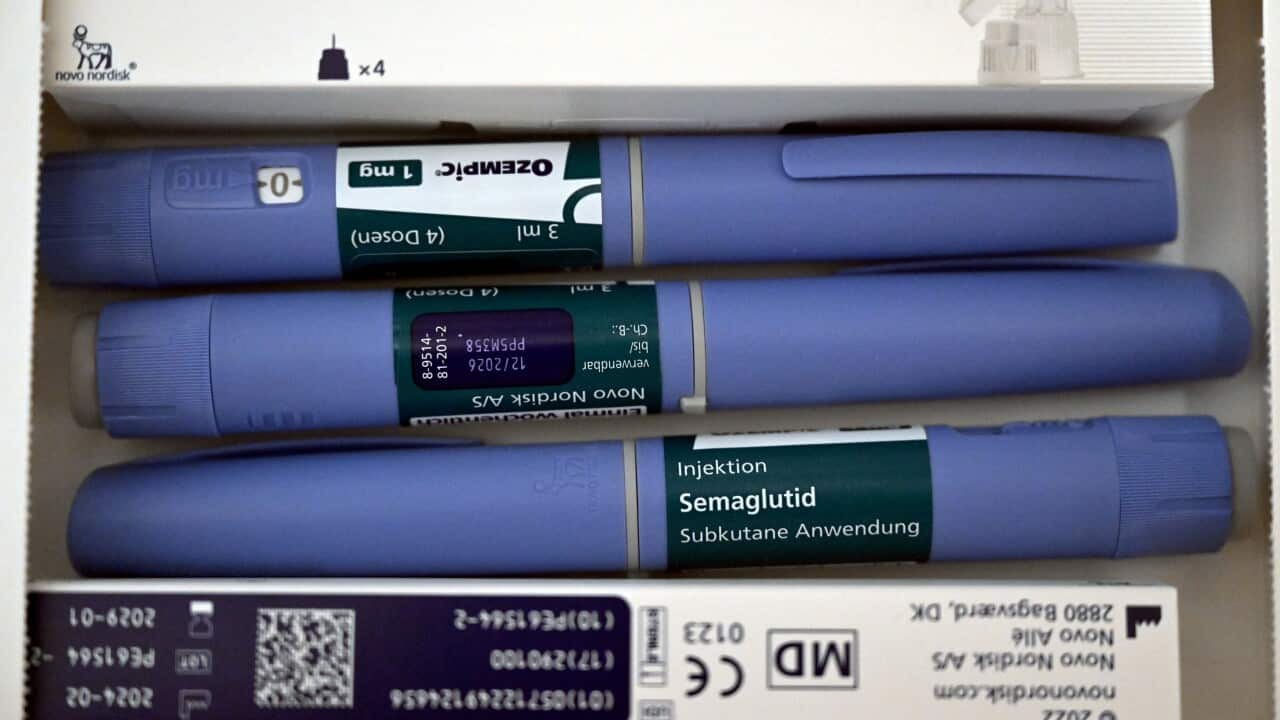More protein and fresh food, hyper-selective eating and 'mini menus'. With an increasing number of Australians on Ozempic-like weight loss medications, these are some of the ways our future eating habits could be influenced, experts say.
Originally developed for the management of diabetes, these GLP-1 drugs are now being sold for weight loss due to their appetite suppression capabilities.
In the past five years in Australia, there's been a surge in the uptake of these medications, such as semaglutide — marketed as Ozempic and Wegovy, and tirzepatide — sold as Mounjaro.
How many Australians are on Ozempic-like medications?
Nearly 500,000 Australians — almost 2 per cent of the adult population — are using Ozempic-like medications for weight loss or medical reasons, according to a report led by researchers at the University of New South Wales (UNSW), which has not yet been peer reviewed.
Sales of GLP-1 medications have increased almost 10-fold from 57,941 units in May 2020 to 496,875 units in April 2025, according to the UNSW report, which measured the gap between sales to pharmacies and Pharmaceutical Benefits Scheme (PBS) dispensings.
The figures are likely an underestimate because there may be more GLP-1 medicines that weren't examined in the report.
"The popularity of these GLP-1 medicines are booming in Australia," report lead researcher Michael Falster, from the UNSW School of Population Health, told SBS News.
More people could join the uptake as medication costs drop and they become available in pill form, instead of an injection.
Falster said such medicines for obesity are under review for subsidisation on the PBS.
He said, if they are subsidised, there would likely be "huge growth in the number of people who are using the medicines".
How will Ozempic change Australian eating habits?
Appetite suppression and a shift in tastes — two of the effects of the medications — are set to have a knock-on effect on the food industry.
"Every bite needs to count, and so, you know, people will be looking for those high nutrient options so that quality protein, the fibre element, is very important to support the gut health and some of the side effects," professor Rebecca Golley, a professor of Nutrition and Dietetics at Flinders University, told SBS News.
According to food and agribusiness bank Rabobank, more people eating less could lead to a rise in demand for dairy, fresh food and "functional beverages", with people chasing more "value per bite".
"It's changing quite sizeably how those consumers are eating, and the amount of people on those products is rising in Australia," Stefan Vogel, general manager of the bank's research division, told SBS News.
"Why is protein so important? Because it's not only fat that one is losing when you're using the drug, but it's also muscle that is reduced."
How dinners are changing in households
A US study found households with at least one person on the medications reduced spending on products such as chips, sweet baked goods and salad dressings, while yoghurt, fresh produce, meat snacks and nutrition bars grew slightly.
Those eating habits are likely to affect more than the person on that medication.
"It's often not the person itself that's using the drug, but it's the larger part of the household that shows some change," Volger said.
"The dinners are changing a little bit across the household."
It's currently estimated that usage of GLP-1 drugs is already reducing food and beverage consumption by one to two per cent, driven primarily by the United States and with Europe starting to follow.
Vogel said the food industry is looking at what to do about products that are high in sugar and high in fat.
Already, companies such as Nestlé are responding by introducing a line of high-protein, high-fibre frozen meals, while Danone and Coca-Cola are also trying to capture the "Ozempic market" by selling high-protein, low-sugar products.
Restaurants in the US are also reportedly selling "Ozempic menus" to appeal to people taking the medications, selling bite-size portioned meals.
However, with the uptake still relatively low compared to the general population, restaurants in Australia are not following the US trend, Vogel said.
Golley from Flinders University said many Australians still opt for discretionary and energy-dense, nutrient-poor foods, a trend that's been consistent for over three decades. GLP-1 drugs could reverse the trends.
"These drugs will be one of those things that we can add into the mix to finally see a shift to decrease those energy-dense, nutrient-poor foods," she told SBS News.
However, Falster from UNSW said GLP-1 medications are not a "magic bullet" for weight loss and the best way to obtain the clinical effects are to use the medicines with other lifestyle interventions.
"There's a good chance that what people eat is going to change in the future," he said.
"But I think...we need to make sure that people are working with clinicians and dietitians to make sure that what they are eating is healthy and balanced and appropriate for making sure people maintain muscle and bone while they're in the process of losing fat."
Share




